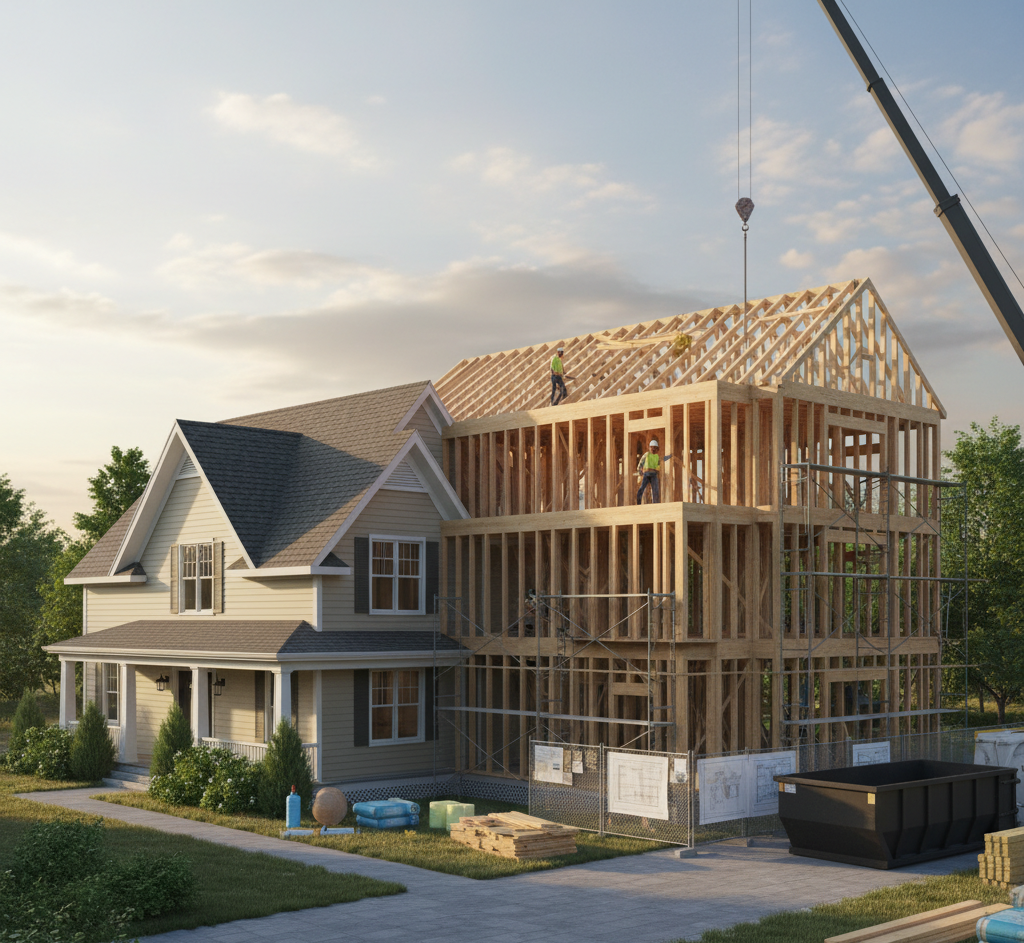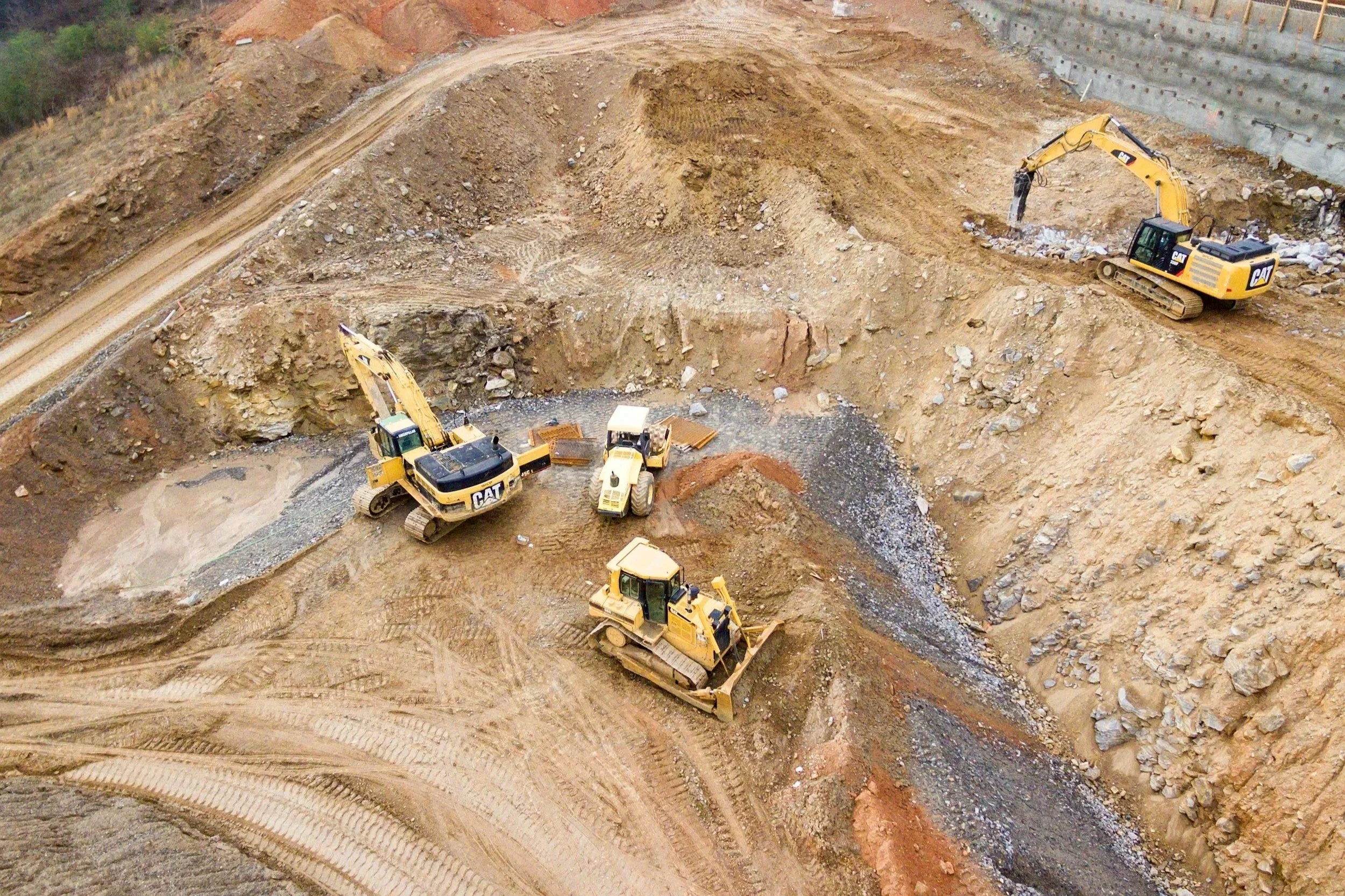CIVIL ENGINEERING SERVICES
SINGLE-FAMILY HOMEOWNERS
Whether purchasing a vacant lot for a new home, building an addition, constructing a pool, or many other typical property improvements, municipalities often require local permit approvals in addition to Uniform Construction Code (UCC) permits. In New Jersey, activities such as regrading, excavating, clearing, or increasing the impervious surface coverage on a lot often require the submission of a signed and sealed engineering plan(s).
New Jersey has over 560 individual municipalities (i.e. towns, townships, boroughs, villages, cities, etc.). Each one has its own zoning laws, local permits, and town-specific design criteria. EJE will work with you to identify these requirements early in the design process. Expand the items in the list below for brief descriptions of several typical civil engineering services that may be required for your home project:
-
Design of the site elements of a single-family property, such as building location, driveways, patios, decks, pools, sheds, fences, detached structures, etc. These plans are also often required as part of residential subdivisions and other applications.
-
Design of the proposed (i.e. post-construction) lot topography, also known as grading. It is often necessary to regrade a property to meet the needs of the new home, addition, pool, etc. These elevations go hand-in-hand with the building design and require complete coordination between EJE and your architect and landscape architect, if applicable.
-
Retaining walls are structures built to support soil in order to provide different topography on either side. Such walls are often required in order to grade the property in a compliant and useful manner.
-
Whenever pervious surfaces are removed and replaced with more impervious surfaces, the more stormwater runoff is generated. Here are some common activities that typically increase imperviousness on a lot: new dwelling construction, additions, overhangs and porticos, pool, patio, some decks, new or widened driveways, etc.
Municipalities will often require property owners to mitigate or offset this increase in surface runoff by constructing a subsurface groundwater infiltration system. Depending on the town, the general practice is for the engineer to design a subsurface infiltration system to convert what would be runoff into groundwater for a target design storm or rainfall depth. Depending on the site conditions, these shallow underground chambers can occupy a relatively large footprint and should therefore be considered in the site layout.
-
Permit to obtain UCC construction permits once the Zoning Officer deems the project to be compliant with the municipality's zoning laws. Municipal zoning laws (ordinances) dictate the allowable dimensions within which the new dwelling and site improvements must conform. These size related dimensions, also called bulk dimensions, may include criteria like maximum building size and height, minimum lot size, maximum building and overall impervious surface, minimum setbacks to adjacent property lines, etc.).
Construction drawings from the project architect and civil engineer would be submitted to the town for zoning review and approval. Once approved, the construction documents would only then be reviewed for UCC permits (i.e. building, plumbing, electric, fire, HVAC, elevator, etc.). Please note: in order to obtain this approval, the entire building and property must strictly adhere to all zoning criteria for the site's zoning district.
-
If the proposed site and/or dwelling improvements cannot be reasonably constructed by strictly applying the bulk zoning requirements, then the Zoning Certificate application would be denied. At such time, the home or property owners would need to apply to the town's Zoning Board of Adjustment (ZBA) for approval of a 'C' variance.
Applying for a 'C' variance requires submitting signed and sealed hard copy plans from both the project architect and civil engineer. The ZBA members, along with their hired professional civil engineer and professional planner, will review the entire application package. Often, the ZBA's engineer and planner will prepare a memo or letter summarizing the application, and noting any zoning code violations, identification of required variances and design waivers, adherence to accepted engineering and construction industry practices, safety issues, and valid local or neighborhood concerns. Please note: this service does not include Professional Planning services. Professional Planners are seldom needed for single-family dwelling work, though such has happened before. Please refer to the Planning Services Page for additional information.
-
If there is a civil engineering need for your project that is not listed, please reach out on the Contact page to set up an initial engagement call
DEVELOPERS AND CONTRACTORS
Most commercial, mixed-use, and residential developments larger than a single-family home will generally require Site Plan Approval from the local Planning or Zoning Board. In certain towns, making modifications to, improving, and even repurposing portions of existing sites may require Board approval. EJE can prepare complete site/civil design plan sets which typically involve the following:
Existing Site Conditions and Demolition Plans
Site Preparation and Staging Plans
Site Plans
Zoning Analysis Plans
Grading Plans
Drainage Plans
Utility Plans
Soil Erosion and Sediment Control (SESC) Plans, Notes, and Details
Roadway Profiles, Cross-sections, and Corridor Plans
Maintenance and Protection of Traffic and Detour plans
Construction Details
Earthwork (Cut/Fill) Plans
Steep Slope Analysis Plans
Other specific civil engineering plans required by Boards
Image 2
Image 3



